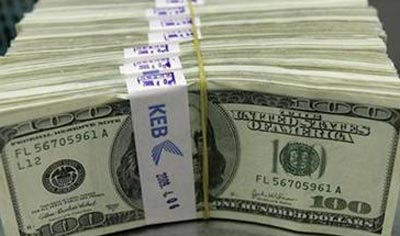Monday, 20 July 2015 17:55
 LONDON: The dollar reached its highest in three months against a basket of currencies on Monday, with the New Zealand dollar the only major standout after comments by Prime Minister John Key gave investors pause for thought on the scale of its slide.
LONDON: The dollar reached its highest in three months against a basket of currencies on Monday, with the New Zealand dollar the only major standout after comments by Prime Minister John Key gave investors pause for thought on the scale of its slide.
Solid U.S. inflation and housing data helped the U.S. dollar to its best performance since May last week after Federal Reserve Chair Janet Yellen reiterated that U.S. interest rates will probably be lifted later this year.
That theme continued to dominate on Monday, with the dollar hitting a four-week high against the yen, although with markets thinned out by the absence of Japan and the summer holiday season, trade was relatively muted.
The kiwi was the exception, recovering from levels near last week’s six-year low of $ 0.6498 after Key was reported as saying its 25 percent slide in the past year had been more than expected and that the economy was growing at a good pace.
That came ahead of a meeting this week of the Reserve Bank of New Zealand, which is expected to cut interest rates further to support growth. Traders said the comments went against some bets in the market of a larger half-point reduction in rates.
“The sharpness of the move is perhaps evidence of just how short of NZD the market is heading into this week’s meeting,” said Adam Cole, Head of G10 FX Strategy at RBC Capital Markets in London.
“Market rates attach a fairly high probability to a 50 basis point cut, so a 25 basis point move may see NZD shorts covered and a kneejerk higher.”
The U.S. dollar’s gains in the past week have strengthened the hopes of some of the dollar bulls still betting on a run at parity with the euro over the next year.
While confidence has fallen off among many analysts and investors in a Fed move in September, most say market pricing still leaves the dollar room to move higher if the U.S. central bank finally looks like delivering after the summer.
At the same time, the dollar’s less assured performance since March, and broader problems with growth in both Europe and Asia, have been leading other central banks to reduce their own interest rates, in turn weakening currencies.
A 4-percent slump in gold prices on Monday, also in part a result of the dollar’s gains, added to pressure on currencies like the Canadian and Australian dollars and the Norwegian crown, which tend to be driven by commodity prices.
“All of the commodity currencies are taking a hammering from the dollar’s rise,” said a dealer with one international bank in London. “There should be more pressure to come.”
The dollar index reached a three-month high of 98.088 in morning trade in Europe. It was 0.1 percent higher at 124.23 yen , having traded as high as 124.39 yen but down 0.1 percent against the euro at 1.0840.
“The euro’s direction is probably still toward the downside,” said Teppei Ino, an analyst for global markets research for Bank of Tokyo-Mitsubishi UFJ in Singapore.



























